Best/Essential Hobby Tools for Miniatures, 3D Prints & Scale Models
Last Updated on May 2, 2022 by FauxHammer
I’ve been wanting to summarise the Essential Hobby Tools for Miniatures, 3D Prints & Wargames Models for quite some time. It’s rather obvious what many of them are, but I’ve had some difficulty defining the structure in a way which is suitable to the various types of hobbyist and myriad of skill levels out there.
Below I’ve summarised a list of plastic modelling tools based on the order you are likely to pick your equipment up. In regard to tool per skill level, I’ve detailed the various options within the sections below. This article is part of our journey to find the Best Hobby Tools for Miniatures & Models
Please Note: This site uses affiliate links. Our Affiliate Partners are shown below
(Affiliate links will result in compensation to the site on qualifying purchases)
Click this link & buy your hobby stuff from Element Games for the UK & Europe to support FauxHammer.com – Use Code “FAUX2768” at the checkout for double reward points.




Our Affiliates / Hobby Stores
- UK: Element Games, The Outpost, Wayland Games, Mighty Lancer, Goblin Gaming, Forbidden Planet, Model Scenery Supplies, eBay, Amazon
- US/Canada: MTechCave, GameKastle, eBay (US), eBay (CA), Amazon
- Germany: Taschengelddieb
- Europe: eBay (DE), eBay (FR), eBay (ES), eBay (IT), Amazon
- Australia: eBay, Amazon
- Global: RedGrass Games, Warcolours
- 3D Printers: Phrozen 3D, Elegoo, Anycubic
FauxHammer – Latest Video on YouTube
Essential Hobby Tools for Miniatures, 3D Prints & Scale Models – Required Tools
The items below are the absolute, necessary components you need in your kit. As a complete beginner, they are the items you “must” buy first before you can even get started. For anyone stepping up in skill level, these are the items you want to upgrade first.
Brushes
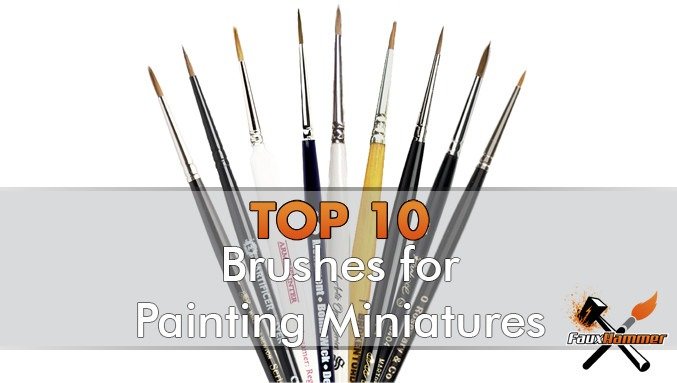
See our full article on the best Brushes for Miniature Painters
There are literally 2 things you simply cannot paint without, Paints and Brushes. Click the image above to see our breakdown of the best brushes you can buy. Put simply, as a beginner, your Games Workshop or Army Painter brushes will do the job. With their unique shapes made for specific tasks, they do a lot of the work for you.
When you are stepping up in skill, you want to aim for a natural hair Sable Brush set. Artis Opus offers some incredible brushes with their Series S, M & D sets, arguably on par with the more popular Winsor & Newton Series 7
The Most Critically Acclaimed brushes, however, are Raphael’s 8404 series. Even though they are not as popular as Winsor & Newton or Rosemary & Co. I’m yet to see a bad word said about them.
Paint
See our article on The Best Paints for Miniatures & Wargames Models
Obviously, in order to paint miniatures, you need paint. you could leave them unpainted. But then how would you know which miniatures are on which players side? It’s arguable that with Games Workshop models, at least that you get your opposing forces in different coloured plastic now. Yet Games Workshop
There are various brands. Games Workshop’s Citadel paint range is by part the most popular and great for the beginner, especially as Games Workshop provide a slew of Tutorial videos showing how to use these paints, you just need to get the paints and copy. Other ranges such as Army Painter and Privateer Press are also great considerations. The most lauded range is Vallejo who provide various series of Miniature paints or Airbrush Equivalents.
Glue
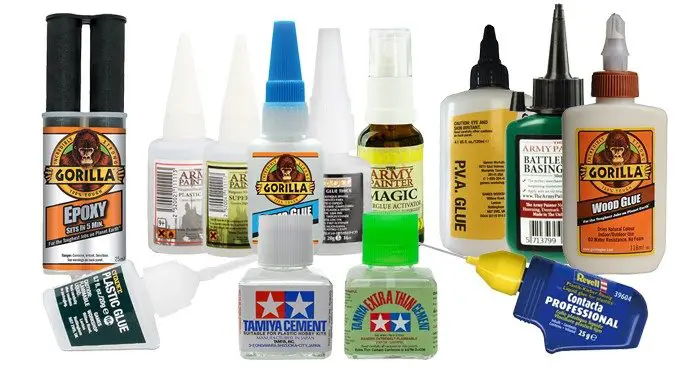
With the exception of the few push-fit models available, almost all miniature components will need to be glued together before, during or after painting them.
For Plastic Miniatures, you need should really use plastic glue. Super Glue will work with any kind of miniature so if you have a mix of plastic, resin and metal, just get some Super Glue as your first glue as it will work with anything.
Specifically for plastic miniatures, plastic glue is applied to both parts which are to be stuck together. This will melt the plastic slightly which will cause them to essentially fuse themselves. You can spend the earth on Games Workshop’s plastic glue which has the strangest (in my humble opinion), yet a rather common applicator spout. Or you can pick up any other solvent-based plastic glue you like.
The Tamiya Extra Thin Cement is a more favourable option as it has an equivalent price and comes with a thin brush in the lid for applying it. It does, however, dry out pretty fast as it’s so thin. Some say you should dry-fit your piece and run this down the seam.
Metal or resin Miniatures require a type of superglue, this comes in many forms but the general 2 are liquid and gel. With the liquid version being quite runny it is used for small components. the gel is thicker and is best used for larger pieces.
PVA and wood glues aren’t necessarily used for miniatures themselves. However, as soon as it comes to basing your miniatures these are the types you would use. With Wood Glue giving a marginally stronger bond. Both are water-based and can be easily thinned or washed off before they start to dry
Hobby Knife
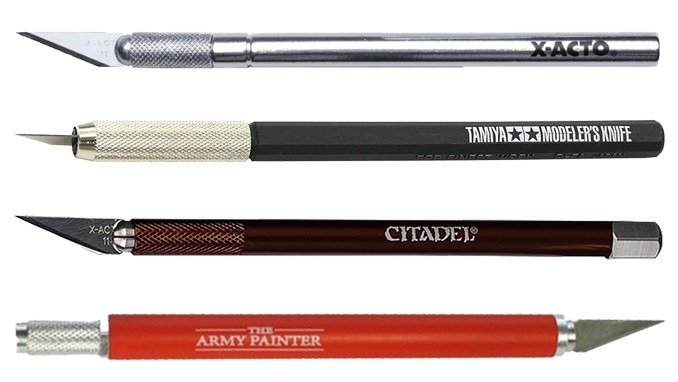
There are numerous hobby knife sets you can pick up with blades of all different sizes and shapes.
But the defacto knife is the x-
A hobby knife is the most necessary of all your cutting instruments, In later sections, you will also come across sprue clippers and mould line removers. At its simplest level, the hobby knife can achieve all of these tasks.
You only need 1 handle (I’ve had the same one for over 20 years) and simply replace the blades when you need to. This is used for many things, such as trimming the excess sprue parts from your model pieces and cutting out water slide transfers. It can also be used for removing mould lines. However, unless you have a feathery touch, you can end up taking away more plastic than you expect them to. This is why it’s often better to get a specific mould line removal tool.
Water Pot
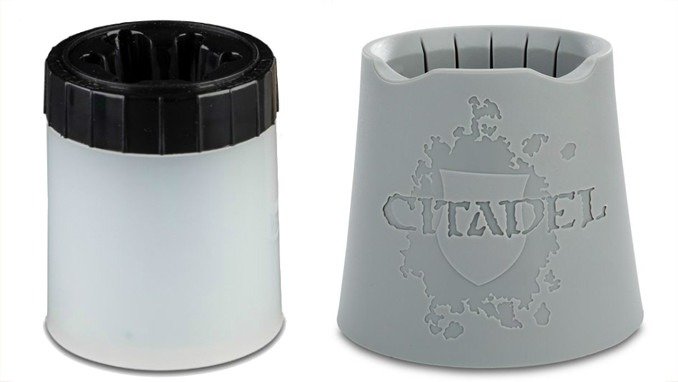
Kind of a given, but certainly worth mentioning. You need some kind of water receptacle. As a beginner, you can use some old plastic cups or empty noodle pots. When you become a “professional painter” you will want to step up to some old mugs! You could even get some branded mugs. Just make sure you have a way to differentiate them from the ones you use for hot drinks. Many of us have made the mistake of drinking a brush in a drink. Fewer, but still some, have even drunk their paint water.
There are several Water Pot products on the market that you can buy, and looking specifically at Games Workshop’s offering. It’s better and cheaper than their mugs and most other options.
When it comes to Water pots, you will want at least 2. one for normal paints and one for metallics. Personally, I use 3, the third one in a final rinse and also to take clean water for thinning paints.
Essential Hobby Tools for Miniatures, 3D Prints & Scale Models – Intermediate Tools
The below tools are for when you want to transition from a complete beginner and each, in turn, will either improve your modelling or hobbying skill or just make your life a lot easier.
Primer
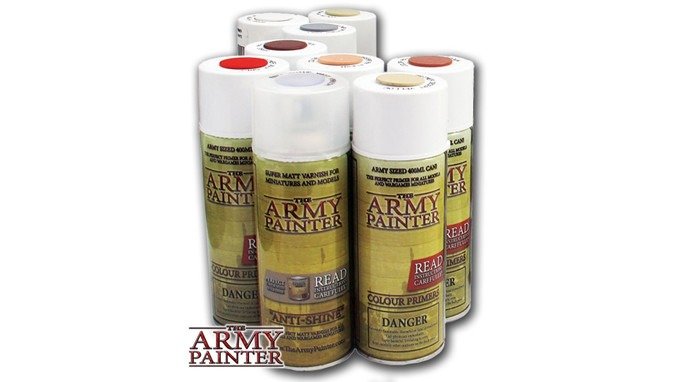
I ‘m going to get a lot of stick or not putting Primer is the Required Tools section, but I have seen many incredible painters who paint without using a primer. I will stand by Primer, not being “required” as it is simply not “required”, you can paint without it. But I promise you that this is the most important, unnecessary tool you can buy.
Whilst, like paint,
I’ve seen some mind-blowing painters who do not use a primer at all. (these are for display only, not for use in wargames).
Most companies who produce Miniatures and Wargames Model Paints will also create Rattle-Can Spray Primers in various colours. Games Workshop’s Citadel range is well known and you can also pick up Primers from Army painter & Privateer Press.
You can opt (if you don’t want to pay for the Miniature brand name cans) to pick up any plastic primer from the likes of Rustoleum or Krylon for half the price or less. These also come in a range of colours.
My personal preference, however, is Airbrush primer. It does not adhere to the models as well as rattle-can primers but it does leave a much smoother finish and clogs less detail. This also comes in a variety of colours from brands such as Vallejo and Badger’s
Palette
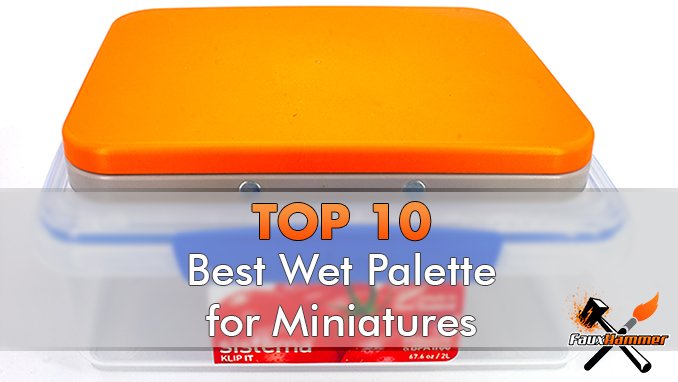
See our article on The Best Wet Palette for Miniatures
Like with primer, palettes are not “required”, but if you are painting straight from the pot you simply won’t be able to get a good finish. 99 times out of 100 – probably more than that, your paint will be far too thick to paint smooth layers. Get some kind of a palette where you can put your paint and thin it with water. Anything with a smooth clean surface will work. Games Workshop
You can buy any old plastic artists palettes online which will do the job, but will also need to be cleaned off to keep the smooth surface.
The best option is using a wet palette. This is a palette with foam or tissue that you keep wet. Then a layer of semipermeable paper on top of this. It stops your paint from drying out. You can easily make your own using some Tupperware, a sponge and some baking parchment. or you can buy them online. The one that is made for and dedicated to Miniature painting the Redgrass Games Wet Palette (shown above) which is favoured by many miniature painters.
Brush Soap
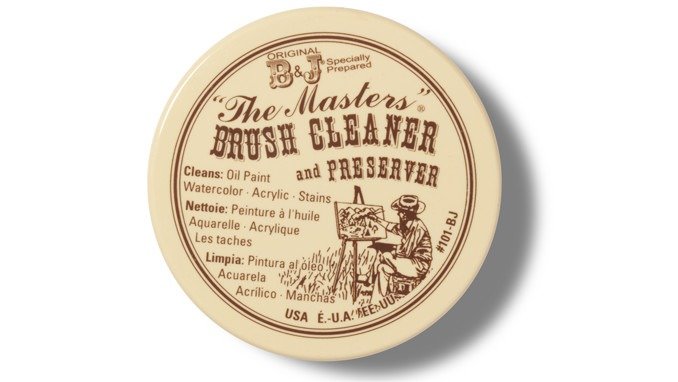
Use brings about wear, tear, and rust, A good worker takes good care of their tools and it’s no different here. Keep things like knives, clippers and other metal tools free of rust. You also need to keep your brushes free of paint. at least when you aren’t using them anyway.
You may think that rinsing your brushes in clean water is cleaning them, One use of a brush soap will show you, it isn’t. If you’re using cheap brushes like Games Workshop or generic Hobby Store brands this will greatly extend the life and condition of those brushes. If you are using high-end sable hair brushes, Brush soap is a necessity. Once you think you’ve rinsed your brush, run it through some brush soap and massage it through the bristles until it runs clean. Then you can finally rinse your brush and put it away.
Sprue Cutters
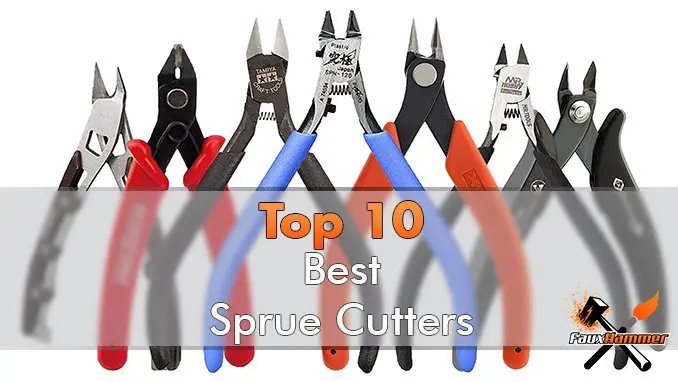
See our full article on the best sprue cutters
Quite a necessary piece of equipment. You can always remove models from sprues by flexing, ripping and tearing but this will leave chunks of plastic on your models or even worse, snap the parts. You can buy Games Workshop’s own Citadel Fine Detail Cutters or just pick up any fine cutters from a hardware store at a third of the price or even less. You just want something small with the flat edge and a long nose.
There are some more professional options on the market such as the Xuron 2175ET (which I bought and don’t really have a very flush cutting edge) or the Tamiya Cutters which leave an incredibly straight cut (for a price).
Tweezers
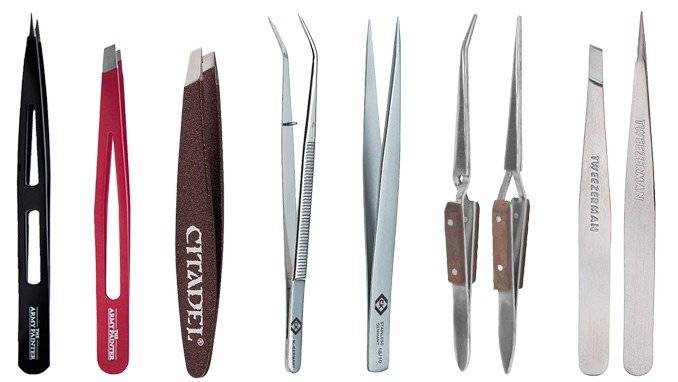
You can pick up tweezers anywhere for next to nothing, however, these options are normally soft metals and you will find the nose bends, long before you can get a good grip.
If you want to pay more money just for the sake of it, you can get some wargames branded tools, but you really are paying for the name. There’s nothing wrong with wanting all of your tools to look cool and have a similar aesthetic.
I do however suggest that if you are paying more for tools like tweezers you check out companies like Knippex or C.K Tools for some professional long-lasting kit used in Electronics. These items will last for years if not for your entire modelling career.
There are multiple types of tweezers you can pick up. There’s your grip type. You can get the more common ones that you hold closed. A much better option in most cases is the reverse of this where they are closed and you press to open them. These ones will keep a hold of the item until you press to let go. Much better for modelling.
Then you need to look at the tip, most commonly you will want some long needle-nose or point-top tweezers for precision and a set of slant-tip tweezers (like the Citadel ones) for holding things like transfer paper.
Finally, don’t underestimate the use of forceps, especially useful if you start to pin components for airbrushing. As you can clamp the pin to hold the item with enough distance to spray.
Pin Vise / Hand Drill
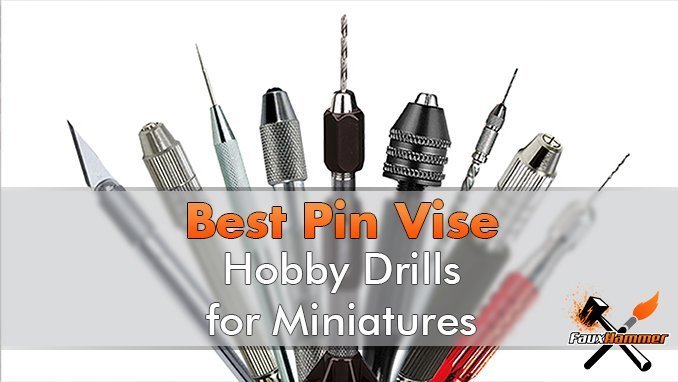
See our full article on the best Pin Vice for your miniatures
An activity which marks the difference between a
Get a Pin Vice, to drill out those barrels in the very least and actually show the depth within them. Don’t believe me? Just post a picture somewhere online, of any model without the barrels drilled out and at least one person will hunt down that picture and shout “DRILL YOUR BARRELS!”.
Another good use of a Pin Vice is drilling holes for pinning your components. Whether this is to securely attach weighty metal components and make sure the superglue holds, or just to put pins in to mount them to cork as you paint.
There aren’t (as far as I’m aware) any highly recommended Pin Vice’s out there. Although I’ve seen a few with quick-change drill bits. They look quite cool.
Mould Line Remover
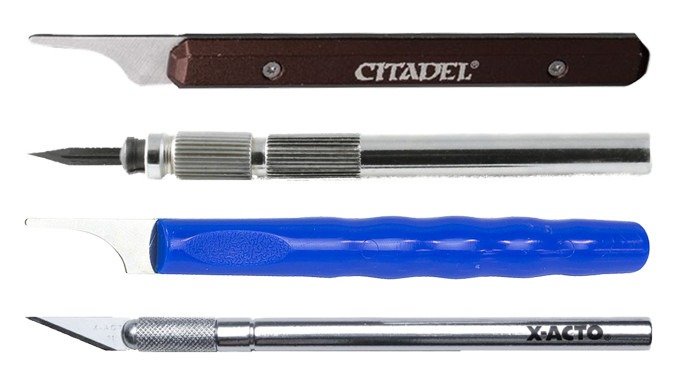
Ok, so as I said, you can use hobby knife for removing mould lines. you just need to be careful as they are sharp enough to easily shave down a curved surface to a flat edge.
A better option, specifically for this task is a mould line remover.
Instead of a surgically sharp blade, a mould line remover, like Games Workshop’s Citadel Mould Line remover has a metal 90-degree edge which is just right for scraping the lines off. Taking off these lines will give a much better final look to your painted mini. You can always just search online for Mould Line remover for a cheaper alternative to Games Workshop’s product.
A step up from this is a Seam Scraper. MicroMark is the most lauded brand. Although, this is only available in the US. A search for seam scraper online will find you some alternatives in other countries. A seam scraper is the best of both worlds between Hobby Knife and Mould Line remover. It tapers to a fine point to get into those hard to reach places unlike a mould line remover and it is not a surgically sharp blade like a hobby knife. Meaning it can remove those pesky lines without as much risk of flattening an edge.
Cutting Matt
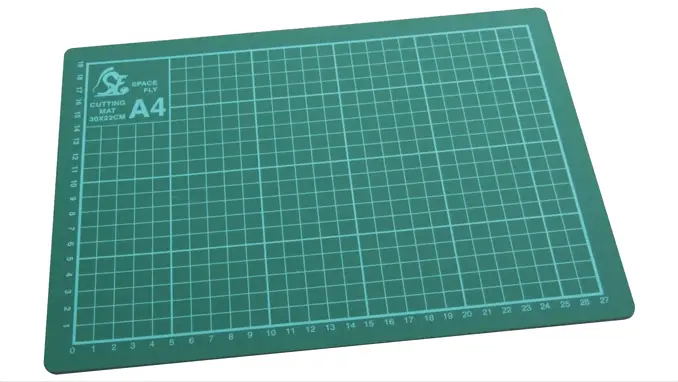
The necessity of this item is dependant on how much trouble you will get into by cutting into a tabletop. A self-healing cutting matt is a necessary component to protect your work surface. They are a basic and very cheap product to pick up and are really all dependant on the size you want.
If you fancy something a bit more Snazzy, Games Workshop has the Citadel Cutting Mat. but any of the standard green or blue mats will work just fine.
Sanding Sticks
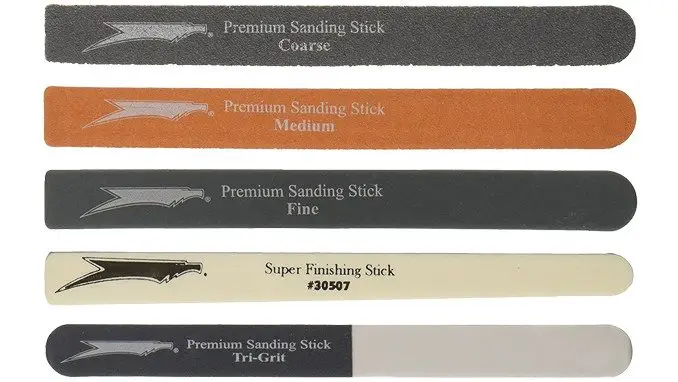
Sanding, even with sandpaper is really useful when working with miniatures.
If you want to take your mould line removal to the next level or even clean up some of the edges where parts have been glued together and get a perfectly smooth join. There’s nothing better than sanding and polishing sticks.
One of the more popular brands is Squadron. Which are great sanding sticks but the size of them makes them more useful for scale models than miniatures.
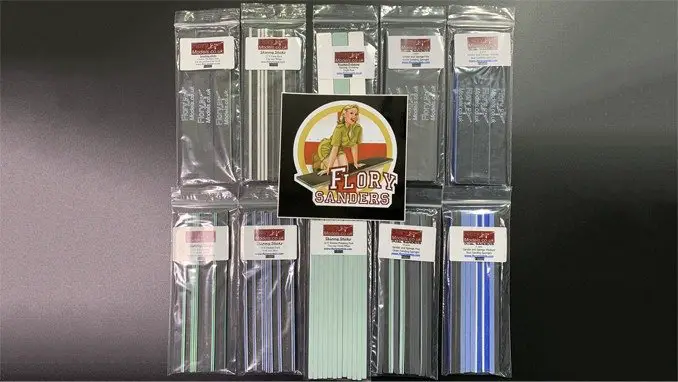
The better option (IMHO) is the flory mini sanding and polishing mini sticks from the UK (pictured above), which are exactly the size you need for miniatures.
Files
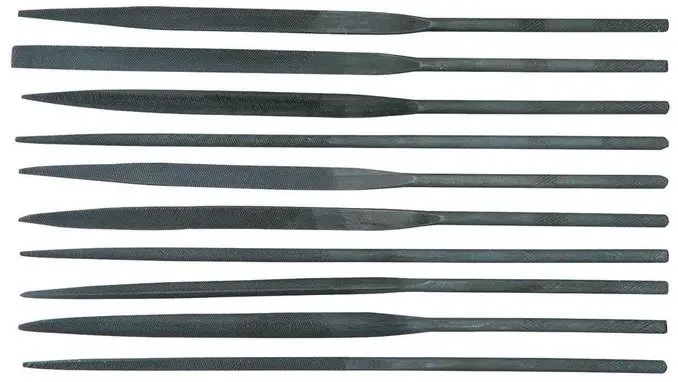
When working with resin or metal miniatures, sanding won’t get you very far. A better option for removing those nasty bumps and lines are modelling files.
Honestly, you can pick up a full set of hobby files for next to nothing and these are perfect for the beginner.
At an intermediate or advanced level, there are some specialist brands who do higher quality sets. But for the highest level, you want to be looking for a jewellers quality set. With good care and attention,
Lighting
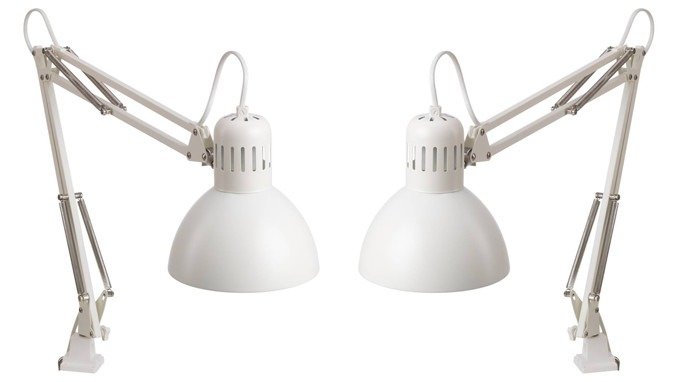
Good lighting really is a key requirement for painting, but it’s lower down on this list because no matter how many people tell you this it will always be one of the last things a hobbyist buys. You can start with natural daylight then a simple set-up with a couple (that’s right, a couple) of lamps.
For a proper setup, you want to upgrade and to get some bright daylight bulbs.
You can make your own light arch over your hobby space.
Finally, there are dedicated hobby lamps which offer the perfect lighting set-up.
Toothbrush
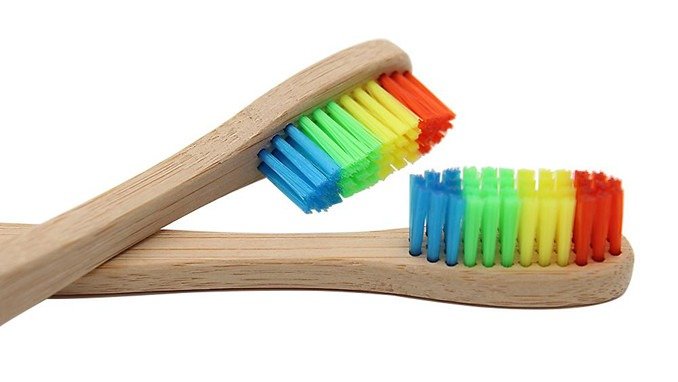
There are 2 main uses for a toothbrush in miniature painting. one is cleaning your miniatures with dish soap before priming. this is to make sure there’s no residual release agent on them from the mould removal process. This stuff can stop paint or primer from bonding to the model altogether.
The other use is stripping paint off your miniatures. If you have a paint job but want to start again with a mini. then you can use isopropyl alcohol, a toothbrush and a little elbow grease will get that paint off a mini in no time. If you really want to go to the extra expense, an ultrasonic toothbrush will help too.
Essential Hobby Tools for Miniatures, 3D Prints & Scale Models – Advanced Tools
Advanced tools are optional and only necessary for true enthusiast hobbyists.
Hobby Handle
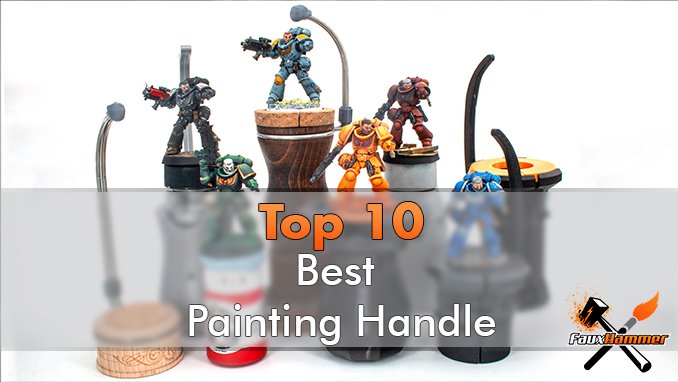
Check out our article on The Best Hobby Handle for Miniature Painters
One of the things that separate a well-painted model to a great painted model not touching the paint job at all whilst you are painting it.
Sure, the paint may be dry, but the natural oils on your fingers will give the paint an inconsistent finish at best and at worst will smudge and soften the style of the paint, along with transferring dirt to the surface of the model.
A couple of ways around this. 1 use gloves. 2 use a painting handle which also gives you the benefit of avoiding cramp whilst you paint. (something us older folk have to suffer with). You can make your own handle with any old pot and some blu-tack, then there are some others you can buy
Games Workshop has some of the most basic offerings, assuming you attach your mini to its base before painting. Then there are some others with unique features like the Redgrass Games RGG 360 handle. The Hobby Handle was a successfully kickstarted option that makes use of bottle caps. The most premium offering is the Rathcore holder which is a wooden, engraved handle with a riser bar, allowing a more stable grip whilst protecting the model from grubby fingers.
Our favourite option, however, is Garfy’s get a Grip series, which holds based (up to 50mm) models or cork allowing you to attach parts using pins. This also has the added benefit of having a protective riser bar in the pro version. Also, it’s pretty cheap in comparison to its competitors.
Airbrush
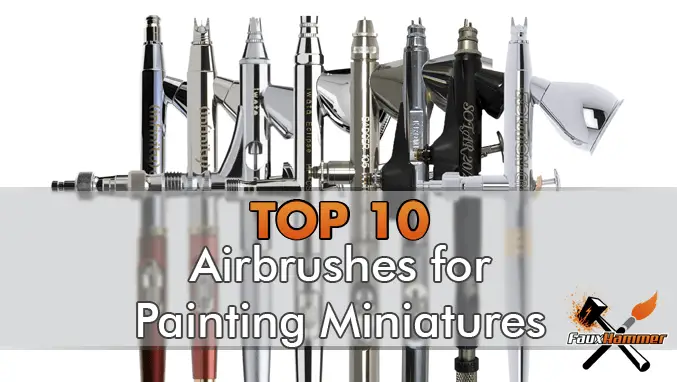
Check out our Article on The Best Airbrush for Miniatures
Using an airbrush is not an advanced technique, but it is certainly more of an advanced tool requiring maintenance a lot of peripheral items to go along with it
An airbrush set up is not difficult to get started with. Check out our guide for the best beginner airbrush where we show you the simplest kit you can buy to get you started. You just need a basic compressor with a tank, which you can get of Amazon or eBay. And that will come with a free basic airbrush.
Static Grass Applicator
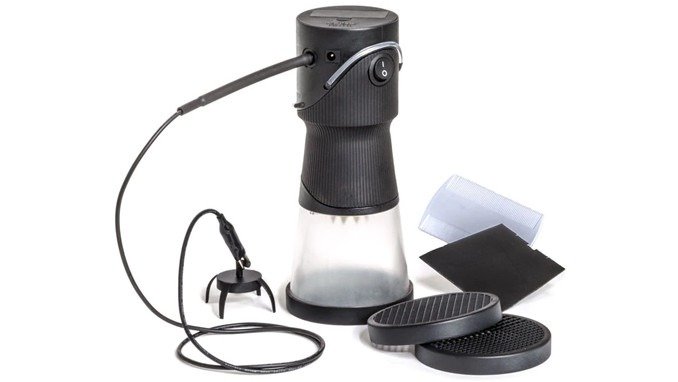
Did you know that Static grass is meant to be statically charged before application? No? well, now you do. Static is meant to be applied with an applicator. The function of this is to pass an electrical charge through the static fibres immediately as it’s applied to wet glue. This is what takes your flock from looking unevenly spread across a base to actually standing upright. If you want to do grass bases, to make them look anywhere near realistic. you can’t get far without one of these.
Hair dryer
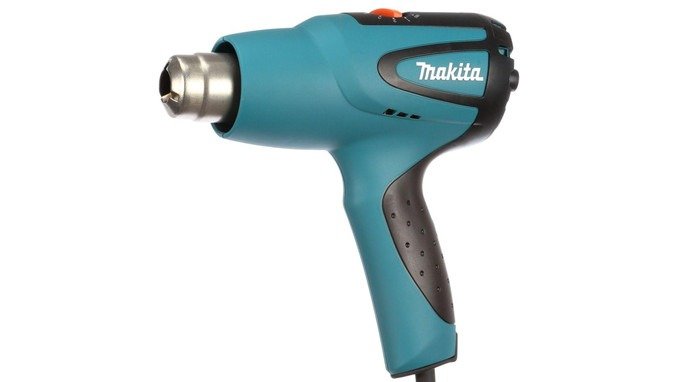
The deeper you delve into frequent painting, the more dispensible a method of quick-drying your paint. If you are display-painting you will need this between layers and equally so if you are batch painting. Give the mini’s a quick blast between coats so you know they are solid. this avoids you lifting partially dried paint which is the biggest cause of badly textured models.
A hairdryer is a hairdryer, meaning one is usually as good as the next for this job. The cheapest hairdryer you can find will probably do the job. So long as it gets hot enough. But personally, I opt for a decorators heat gun set on it’s lowest setting. For one main reason. a hairdryer is intended to be used in short bursts quite infrequently, to dry hair.
A heat gun is made to project hot air consistently. On their lowest settings, they are normally a touch hotter than the average hairdryer on its highest setting. Don’t turn it up because it can strip your paint or melt your plastic and resin models. But the one I bought has been my go-to drying instrument for the past 5 years,
Magnification
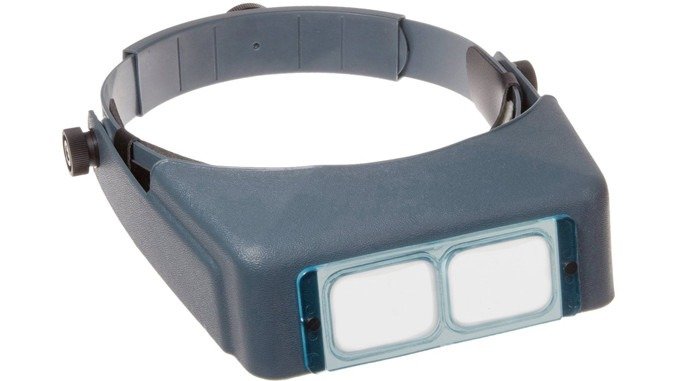
When you are finally ready for painting some of the finest lines, magnification helps, it’s not necessary, but it helps.
There are multiple options here. you can buy a simple magnification stand which will hold your parts and have a magnifying glass, however, this is normally only one level of magnification.
Another option is a magnifying lamp which can both illuminate the mini and magnify it. Again, these are typically only one level of magnification, but some are adjustable.
The best option is the head-mounted magnifier with various levels of magnification.
Paint Shaker
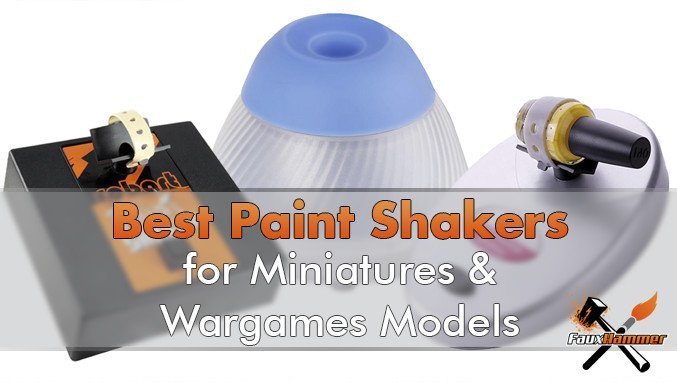
Check out our article on the best Paint Mixers on the Market.
There are a number of paint shakers on the market and a number of DIY options you can utilise to keep your paint in the best shape. The first tip I have with paint pots would be to transfer Games Workshop paints to dropper bottles. Or just use a brand that is already in dropper bottles. Whatever you do or don’t do, it’s worth adding an agitator to your paint pots to assist with mixing.
Before making your own DIY paint shaker, please don’t go looking for a way to attach your paint bottles to a drill. I’ve seen so many people do this and that isn’t a mixer, it’s a centrifuge. It will separate the pigment from the medium, not mix it. The correct way to use a spinning device to mix paint is to get something like a drill or Dremel and put a brush end in it. Or you can buy something like the Badger paint mixer. but this is essentially just a Portable Coffee Frother.
The best DIY method is attaching a g-clamp to something like a jigsaw.
There are some actual paint shakers on the market, the cheapest being a nail polish shaker and the more expensive being the Robart 410 paint Shaker.
The absolute best paint mixer you can get is a vortex paint mixer. These work by creating an orbital spin of the paint bottle which causes the paint to act as a vortex. Constantly churning the pigment and medium in on itself. They are on the more expensive side of tools, but since having one I have found them indispensable. For me, it has even recovered some very old paints from near death.
Bitz Box
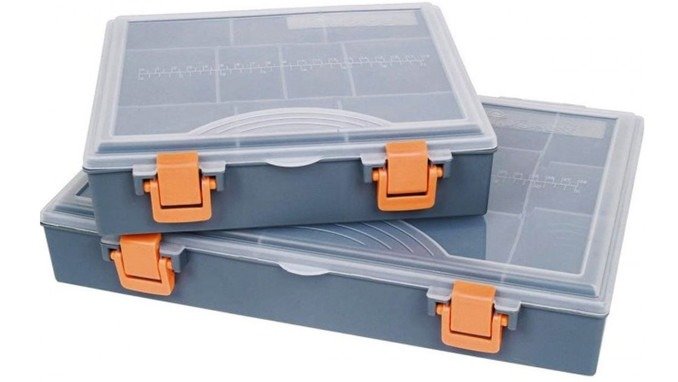
If you are new to the hobby, you’ll soon start to find that you have many leftover components. parts can be used for later conversions, painting practice or basing materials. Some people sell their leftovers on eBay, after all, one person’s trash is another person’s treasure.
Any storage box will fo at first, even the box your models came in. After a while, you’ll build up enough components that you’ll want to start sorting and organising them. Something like a nuts & bolts storage box or a fishing tackle box.
Workspace/Storage
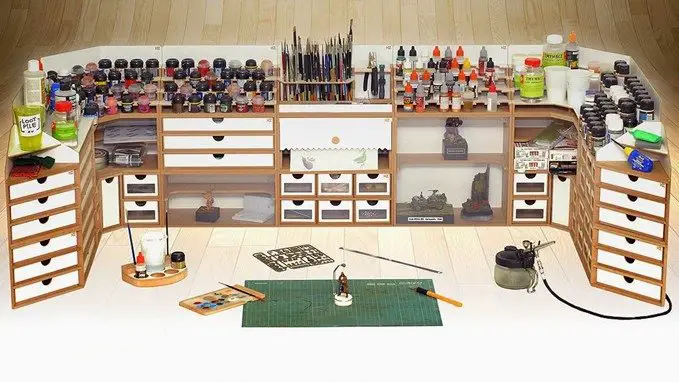
At first, you will probably just use your dining table and some storage boxes. as your models and equipment grow. it becomes more necessary to have somewhere dedicated to your hobby. If for nothing more than to avoid having to pull everything out and put it away every time you want to sit down and do some painting.
For desks, it’d down to personal preference, available space and how much you get it in the neck from other people living with you for leaving all of your kit out. The general rule of thumb is to get a large flat surface and get lots of drawers. you can get dedicated hobby desks which fit this requirement.
For storage, there are multiple options out there and most of them are variations of either laser cut wood or perspex which slots together to make drawers, paint stands or wall mounts. The most coveted set up is the HobbyZone Modular Workshop system which has a series of drawers and racks that you can build in a configuration that fits your space. Check out our reviews of the modules.
Super Glue Activator
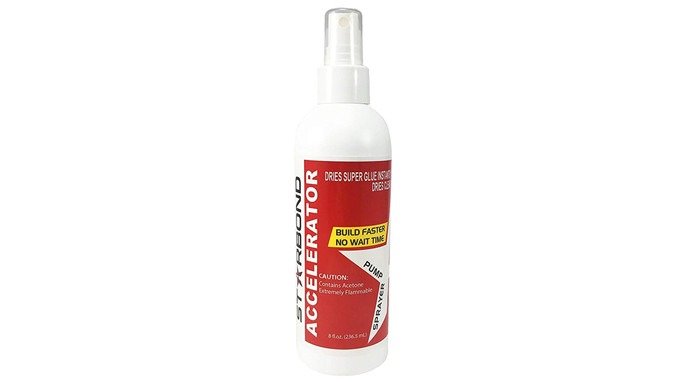
Super glue is super, but for some, it can still take some time to dry and the bond isn’t naturally as strong as it can be. A superglue activator is simple, it will cause the glue to instantly cure and the bond will be much stronger than without it. Not the most necessary tool, but definitely useful for larger metal and resin models.
Paint & Glue Remover
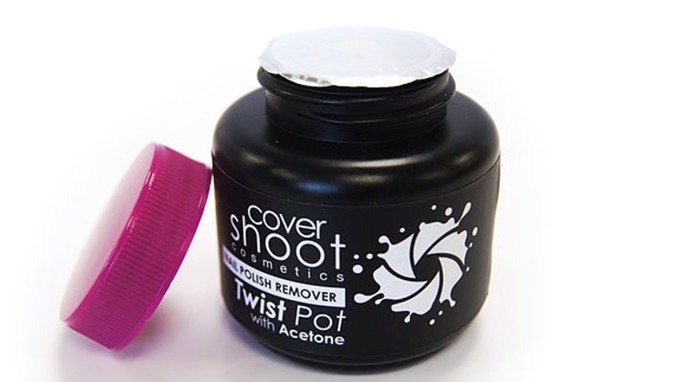
Throughout your hobbying, you are likely to get paint and glue all over your fingers. Especially now it has become quite fashionable to use the back of your hand or thumb-nail as a sub-palette. You could always use latex or nitrile gloves to avoid this. But if you prefer the tactile feedback of using your fingers directly, getting paint or glue on them is unavoidable.
The most marketable product you can use is nail polish remover. its acetone-based and will take both paint and glue off your fingers. Personally, I steal a pot from my wife that has acetone soaked sponge in it. you just did a finger in and swirl it around until it’s clean.
If you are buying a paint stripping product for miniatures themselves. I’ve said it before and I’ll keep saying it. the product you want is isopropanol, aka, isopropyl alcohol or IPA.
Dremel
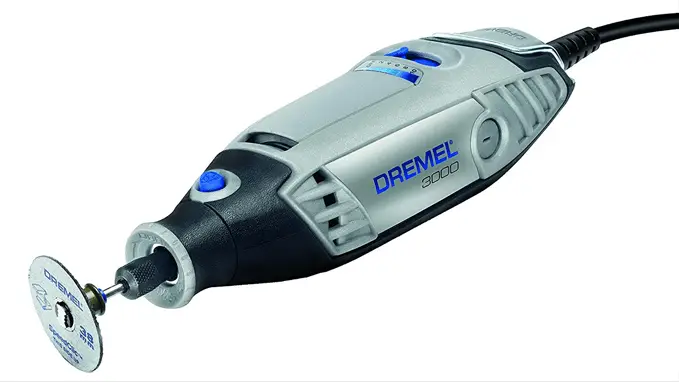
A Dremel or any other rotary tool for that matter is generally just a great tool to own. Not just for miniatures but jobs around the house too. But for the sake of this article, let’s stick to miniatures.
It slices, it dices. But wait there’s more. It also works as a sanding tool, a polishing tool, a cutting tool and my personal favourite, a paint mixing tool. For most cutting jobs that you would use a hobby saw for, this will greatly reduce the time and effort needed. The same with a pin vise, the Dremel will drill much faster, which is almost necessary for metal models, many of which will need pinning in order for parts to stay securely affixed. If you have any old paint that’s dried out, just add a brush end to it and stick it in the pot to mix it.
If you are thinking of picking one up, I highly recommend a wired one over a battery-powered model. not that it spins faster. if you spin it too fast it can melt plastic minis instead of drilling or cutting. but the wired models have more torque, meaning they won’t get stuck in the middle of a cut.
Specialist Tools
Hobby Saw
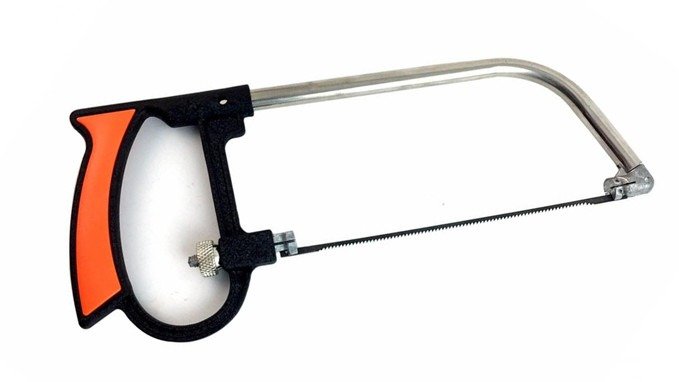
Not the most necessary instrument unless you are converting miniatures, sawing up scenery components or removing the large blocks of resin that come attached to resin miniatures.
When it comes to cutting through Resin, a hobby knife will not do the job, whilst it has a plasticky feel, Resin is a lot stronger than your usual plastic miniatures and needs something like a saw to cut through. It’s a cheap yet indispensable tool when you get deeper into the hobby.
Sculpting Tools
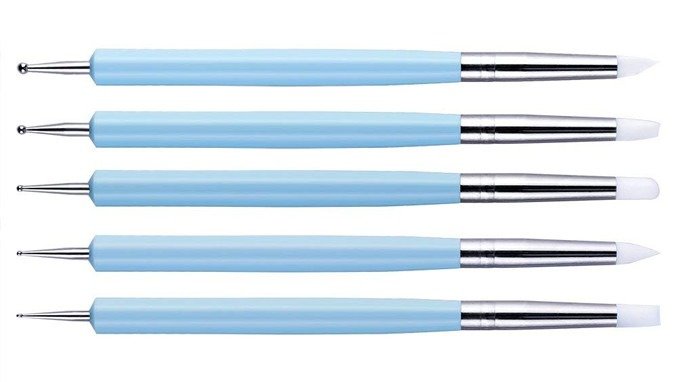
Sculpting is not really for everyone, and, for this reason, it goes into its own specialist category. I know many incredible painters who are terrible at sculpting and never do it. I know many incredible sculptors who are terrible at painting. Some are incredible at both (I am so jealous of those people).
You can start your journey with a simple metal sculpting toolset. Games Workshop does their own Citadel range of 3 basic tools.
You can extend this range with various metal sculpting
Beyond that, a variety of brands make numerous different silicon sculpting toolsets featuring various shapes and sizes for smoothing out and shaping your creations.
You can also pick up a set of Sculpting Styluses too for your poking and prodding needs.
Essential Hobby Tools for Miniatures, 3D Prints & Scale Models – Final Thoughts
And that’s the list. What did you think, did I miss anything? Next, we’ll take a look at the essential consumables. As you expect there will be some crossover with this article but it’s worth knowing the essential kit you’ll need to have alongside your tools.
Please Note: This site uses affiliate links. Our Affiliate Partners are shown below
(Affiliate links will result in compensation to the site on qualifying purchases)
Click this link & buy your hobby stuff from Element Games for the UK & Europe to support FauxHammer.com – Use Code “FAUX2768” at the checkout for double reward points.




Our Affiliates / Hobby Stores
- UK: Element Games, The Outpost, Wayland Games, Mighty Lancer, Goblin Gaming, Forbidden Planet, Model Scenery Supplies, eBay, Amazon
- US/Canada: MTechCave, GameKastle, eBay (US), eBay (CA), Amazon
- Germany: Taschengelddieb
- Europe: eBay (DE), eBay (FR), eBay (ES), eBay (IT), Amazon
- Australia: eBay, Amazon
- Global: RedGrass Games, Warcolours
- 3D Printers: Phrozen 3D, Elegoo, Anycubic
FauxHammer – Latest Video on YouTube
What did you think of this article? Please let us know in the comments.
If you like what we’re doing here you could really help encourage more content with a share on any social media platform.
Click the share links at the bottom of this screen (or on the left for computers and tablets).
Want to keep updated with the blog? You can subscribe in the sidebar for RSS or by email below
(Sidebar is below the article on Mobile Devices)

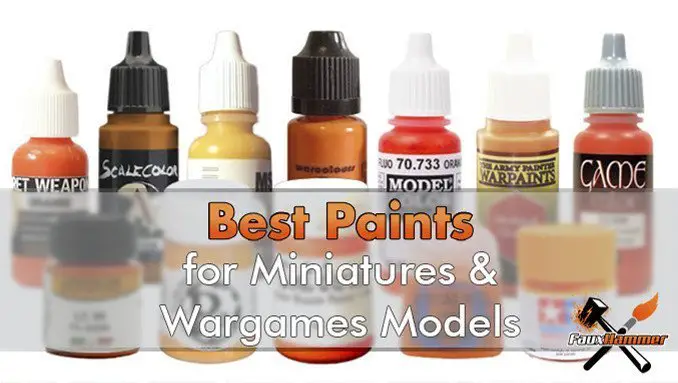
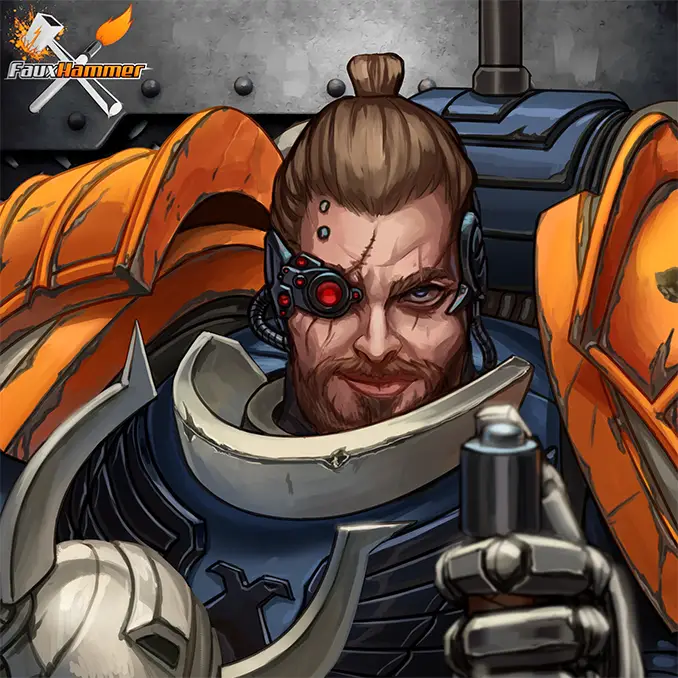
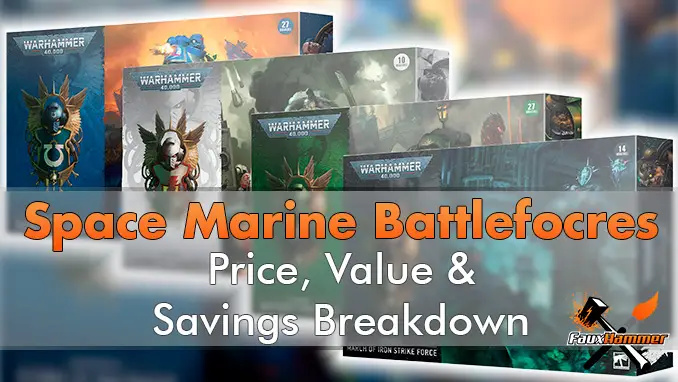
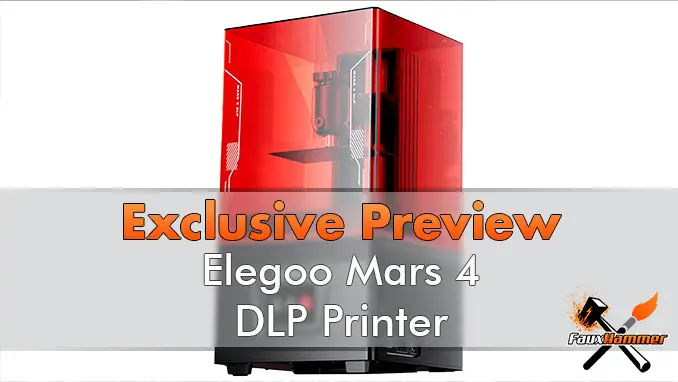
Great tool summary, especially for someone new to the hobby!
Thank you, I’ll be doing a follow up with consumables too.
Amazing, thank you so much!
THanks
Excellent list and superior discussion and articulate reasoning behind your rationale. I would include only one item, my Panovise. This versatile tabletop workhorse would be an essential to support other tools like the hand saw, files, pin drill, and Dremel tool. Having a vise would make using any and all of these easier with better results than without.
Keep up the great work 😃
~mark
Excellent collection of tools. Though, three things I would add.
1. For the brushes, the be-all-and-end-all of it are NOT just Raphael (which is notorious for having delivery bottlenecks). They have equals in the brushmaking world, such as da Vinci (the Maestro or Colineo series) or Escoda (Prado, Optimo or Reserva Series). Also, synthetic brushes by such high-quality companies are not lesser than their natural brushes – and they usually are both springier and more consistent. If you have trouble to keep a fine point or the point of your brush keeps sagging, consider getting imitation sable such as Prador or Colineo! Also, for those who want that ridiculously small brush, da Vinci has started to make a series called Micro Maestro/Nova (Sable or Synthetics) specifically for painting minis!
2. Mould Line Remover – The Micro Mark Seam Scraper is out of production, but I found that the Precision Scraper by Revell – a tough, very pointy and relatively sharp affair – is about the best scraper you can find on the market now. It’s carbon steel, so it can be resharpened if it gets too dull for your liking.
3. Pin vise. Hmm… A hand drill is not bad, but what about a Wow-Stick? This is a miniature electric drill, meant for drilling into Printed Circuit Boards. At an average price point of 50€, not the cheapest tool for sure, but you are so much less likely to slip while drilling or impromptu milling.